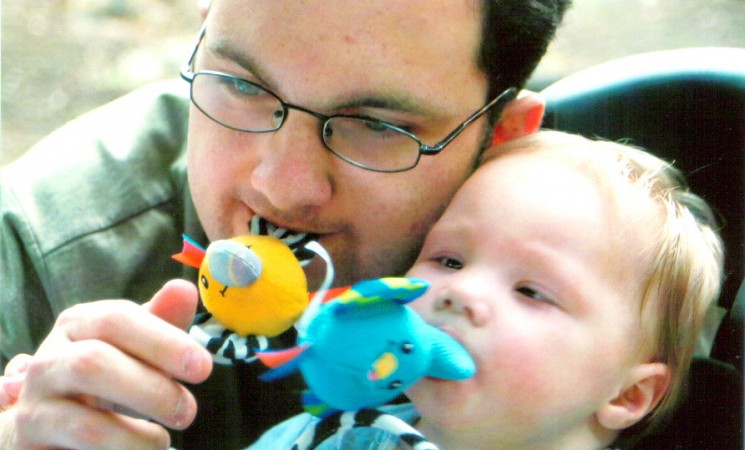Archived Content
This page is archived and provided for historical reference. The content is no longer being updated, and some of the information may have changed over time and could be outdated or inaccurate.

By Dana Wolff-Hughes, Ph.D., and Victoria Smith, Ph.D.
Joint engagement is a state in which two people focus on a common object or target. Mutually sustained engagement may be shared through pointing or shared gazes and responsivity between children and their caregivers.
Interest in joint engagement (JE) has increased in recent years as research indicates that JE plays a critical role in early childhood development. Indeed, studies indicate that the infant and toddler JE abilities can predict their later cognitive, language and social competencies.
Joint engagement abilities relate to young children’s cognitive, language and social competencies over lifecourse
Researchers also have found that children with autism often have significantly impaired joint attention abilities. Studies have found that children who are later diagnosed with autism lack joint attention and shared positive affect with caregivers early in life.
“Research results find children with autism often lacked positive regard from caregivers and development of joint attention skills earlier in life.”
Given its clinical significance, research on joint engagement is critical. According to a new article, “The immediate effects of joint engagement on information processing and learning are difficult to measure.” With funding from the National Institute of Mental Health (NIMH), Ted Hutman and colleagues conducted a study that applied electrophysiological methods to examine the attentional resources children used to discriminate objects presented with and without joint engagement. This research team’s results are discussed in, “Joint Engagement Modulates Object Discrimination in Toddlers: A Pilot Electrophysiological Investigation,” in the latest issue of Social Neuroscience.
Four pairs of toys were presented to each of the 11 participants for 30 seconds, with half the toys presented with joint engagement and the other half without joint engagement. During the joint engagement condition, the examiner strove to engage the child in play with the toy, directed attention to the toy using gestures, promoted eye contact and joint engagement with the child and toy, promoted dyadic play, and displayed positive affect. In the non-joint engagement condition, the examiner did not initiate interaction with the toy and child, did not use gestures, and kept neutral facial expressions. Afterwards, the toddlers viewed images of the toys while connected to high-density electroencephalography.
The analysis focused on the differential neural response to the toys presented in each of the engagement conditions. Results indicated that toddlers had greater familiarity with the toys presented with social cues as reflected by the larger Pb peak amplitude to toys presented with joint engagement. In the non-joint engagement condition, toddlers glanced more frequently at the examiner “indicating sensitivity to social context and the tendency to elicit social interaction.”
Toddlers look to adults for guidance when playing with toys. Engaging helps their cognitive and social development
Hutman, Harrop, Baker, Elder, Abood, Soares, and Jeste (2016) concluded, “This study supports the use of an interactive joint engagement paradigm to evaluate risk for social learning impairments during the time frame when behavioral markers of atypical development are both subtle and emergent.” The authors’ results suggest that the ability to quantify the cognitive effects of joint engagement so future researchers can identify young children who’d benefit from interventions that promote social learning and social communication.
Results suggests future that can identify at-risk kids and how to intervene for their long-term health and wellbeing
Funding Acknowledgements
This research was funded by NIH grants to Ted Hutman (K01MH096961), to Shafali Spurling Jeste (K23MH094517), and a NIMH T32 postdoctoral fellowship to Lauren Elder.
Read the Article
Image Credits/Jeff Osborn








